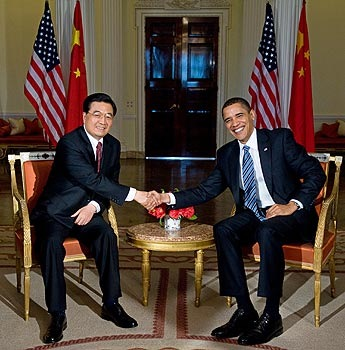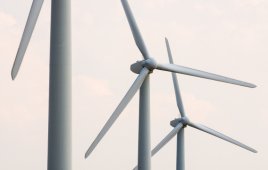 Cooperation on clean energy could be a high point in U.S.-China relations, benefiting both countries, government and business officials said ahead of a summit between Chinese President Hu Jintao and President Barack Obama. Disputes between the world’s two largest economies and energy consumers over China’s wind power subsidies and its slowdown in exports of rare earths minerals, used in everything from wind turbines to cell phones, have dominated headlines in recent months. The countries are also having wider arguments. The United States says China’s currency, the yuan, is undervalued and Washington is pushing Beijing for help in persuading North Korea to abandon nuclear weapons.
Cooperation on clean energy could be a high point in U.S.-China relations, benefiting both countries, government and business officials said ahead of a summit between Chinese President Hu Jintao and President Barack Obama. Disputes between the world’s two largest economies and energy consumers over China’s wind power subsidies and its slowdown in exports of rare earths minerals, used in everything from wind turbines to cell phones, have dominated headlines in recent months. The countries are also having wider arguments. The United States says China’s currency, the yuan, is undervalued and Washington is pushing Beijing for help in persuading North Korea to abandon nuclear weapons.
But with rising concerns about oil prices, now above $90 a barrel, energy security, and global warming, officials said the world’s biggest developed country and the biggest developing country have much to learn from each other. Progress can be made on sharing technologies on efficiency, cleaner coal, and development of renewables like wind and solar power, they said.
As China tries to transform its economy from the manufacturing of cheap goods into one developing and distributing sophisticated technologies, such as clean energy, spats over intellectual property rights have already troubled trade relations between the two countries. But pressure on both countries to reduce greenhouse gas emissions and reel in fossil fuel demand may push them to overcome these differences.
China’s Minister of Science and Technology Wan Gang spoke at a forum on U.S-China clean energy cooperation hosted by the Brookings Institution. He explained that common interests between the two countries make clean energy an issue ripe for nurturing close ties. “I’m sure that this is one of the best points of convergence and cooperation between our two countries, and will be one of the bright spots in our future cooperation,” Wan said.
During the forum, officials from both governments unveiled plans to continue joint research and development in clean energy — electric vehicles, clean coal and energy-efficient buildings — through the U.S.-China Clean Energy Research Center. First announced in 2009, the centers will be supported by at least $150 million from private and public interests over five years.
In addition, several deals were signed between U.S. and Chinese companies. General Electric and China Huadian Corp signed a joint agreement for gas turbines in China that will generate $350 million in U.S. exports. GE also signed a deal with Shenhua, one of the world’s biggest coal firms, on coal gasification. The U.S. Energy Department said that the deal could lead to $100 million in U.S. exports. In addition, Alcoa and the China Power Investment Corporation signed an agreement to collaborate on a range of aluminum and clean energy projects representing $7.5 billion in potential investment both within China and abroad. U.S. utilities Duke Energy and American Electric Power also signed deals involving cleaner-burning coal.
But officials said several hurdles have to be cleared to prevent competition between the two powers from hurting clean energy efforts. Jon Huntsman, the U.S. ambassador to China, said both countries need to continue their cooperative effort to protect intellectual property rights in China. “This a critical issue in the high technology sector including clean energy, and it generates a lot of concern in both U.S. and Chinese companies,” he said. Justin Yifu Lin, a chief economist at the World Bank, said more research and development needs to be done on alternative energies like wind and solar to get them off government subsidies. Until then bickering about subsidies strain relations, as the wind power case shows. In addition, delicate balances will have to be struck between American companies that have new technologies they haven’t fully developed and Chinese ones that want to bring them to their huge market.
“In many commercial negotiations the Chinese play a very hard game of trying to trade market access for technology and American companies are always faced with the question of how much of their crown jewels they are willing to part with,” Robert Kapp, a China advisor to the Kirkpatrick & Lockhart Preston Gates Ellis law firm, told reporters in a teleconference hosted by the World Resources Institute ahead of the Obama-Hu summit. In many cases American companies have decided a certain amount of technology transfer is in their interest.
Filed Under: Policy





Thanks for your comment SM. That article is also a great resource. It seems an issue that requires a lot of reading about to get a full picture of what’s really happening and how we should approach the situation.
Nice article. Clean energy is of high priority for both US and China. Plus, on the path to recovery, this plays a graeter role towards sustainable development. A recent post by Justin Yifu Lin , on Let’s Talk Developemnt, explains why such US-China cooperation should succeed – https://blogs.worldbank.org/developmenttalk/china-the-us-and-clean-energy-cooperation.